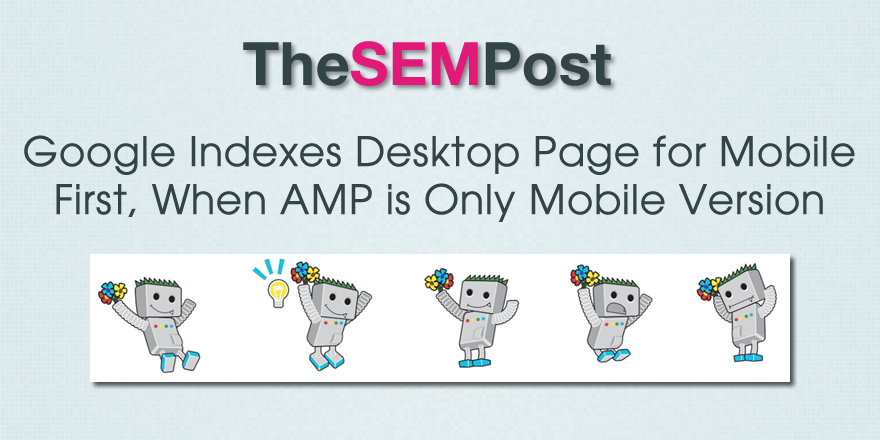
If the only mobile version page that exists is an AMP version, Google will still use the desktop version for indexing, even when Google switches their index over to the mobile first index.
If a site ONLY has an AMP version, such as the AMP Project site, then Google will use the AMP version for indexing. It won’t stop indexing simply because there isn’t a desktop or regular mobile friendly version.
And for sites where there is only an AMP version for mobile friendly, Google will show the AMP version in the mobile search results in place of the desktop. And the AMP version will still get the mobile friendly boost, since it is still a mobile friendly page. But for those sites with a regular mobile version and an AMP version, there is not an additional AMP specific boost, or at least not one that Google has announced. The site would still get the regular mobile friendly boost for being mobile friendly – there is only one boost available for being mobile friendly, regardless of how the site is made mobile.
Since Google announced AMP as part of the ten blue links, some sites have been putting resources into adding AMP to their sites, and using it as the mobile friendly version of the site, either temporarily while creating a regular mobile friendly experience or as the only mobile version site they plan to have. So with the mobile first indexing change, there was some concern about how Google would handle this situation.
We have a FAQ for mobile first that can be found here.
Jennifer Slegg
Latest posts by Jennifer Slegg (see all)
- 2022 Update for Google Quality Rater Guidelines – Big YMYL Updates - August 1, 2022
- Google Quality Rater Guidelines: The Low Quality 2021 Update - October 19, 2021
- Rethinking Affiliate Sites With Google’s Product Review Update - April 23, 2021
- New Google Quality Rater Guidelines, Update Adds Emphasis on Needs Met - October 16, 2020
- Google Updates Experiment Statistics for Quality Raters - October 6, 2020